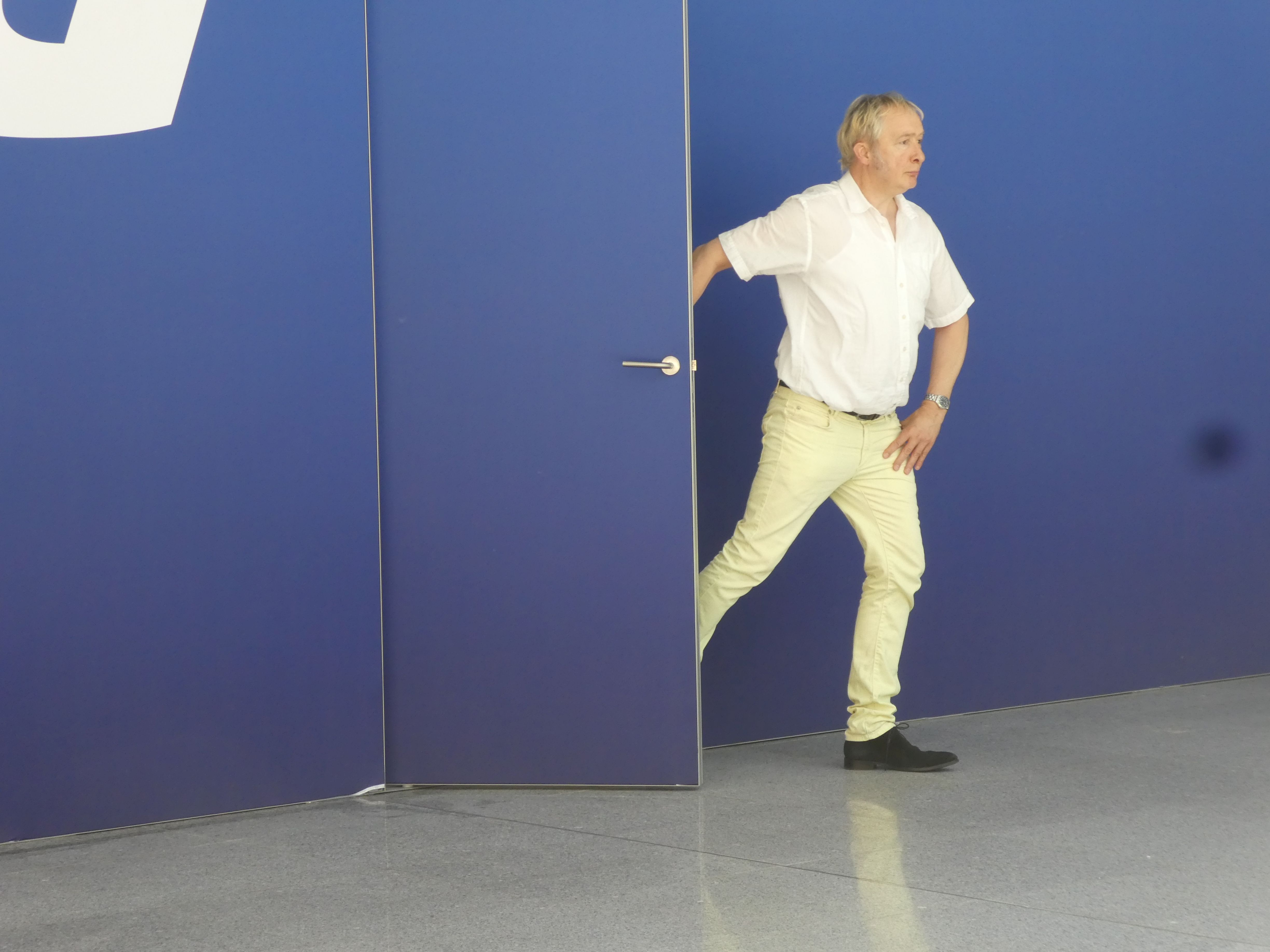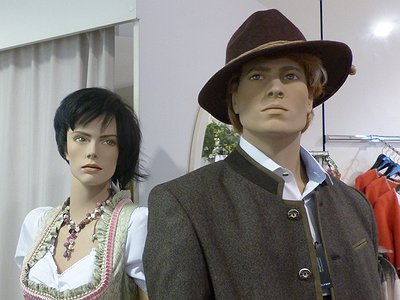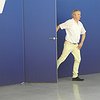Name: Fred und Luna
Occupation: Plastic Mannequins
Nationality: German
Current release: Fred und Luna release Future Sounds of Kraut, a selection of current and fairly recent pieces in a Kraut-style via Compost. Released on September 1st 2023, the compilation includes tracks by Listening Center, Kosmischer Läufer, Sankt Otten, Pyrolator, and I:Cube.
If you enjoyed this Fred und Luna interview and would like to stay up to date with the duo and the music of their mastermind Sugar Ray Buckmiller, visit them on Instagram, Facebook, Soundcloud, and bandcamp.
For an in-depth look at another excellent recent Compost compilation, check out our Rainer Trüby interview about his latest release in the Glücklich series.
Annotation: As plastic mannequins cannot speak, Fred und Luna’s thoughts are translated into human language by their mastermind Sugar Ray Buckmiller, who does all the compositions and live events for his muses Fred und Luna.
I've recently enjoyed exploring some of the more obscure downbeat compilations from the 90s, many of which have really intriguing concepts and tracks that can not be found on streaming services. What are some of your own favourite compilations?
Luna: Your mentioning obscure compilations from the 90s reminds me of our collection of Space Age Pop and Easy Listening records. Some favourites are The In-Kraut, Electronic Toys, Inflight Entertainment Cocktail Mix, Get Easy and Ultra Lounge series.
Fred: Not to forget the Spaghetti Western Encyclopedia, The Great Celebrity Sing Off and some records more different to that: Italo Disco, Minimal Music and Acid House compilations, Mind the Gap Vol. 1, DJ Morpheus’ Freezone series.
There are so many, especially from the mentioned time period.
At their very best, are compilations as artistically satisfying as an artist album? Can they be compared at all? What can a compilation do that an album can not?
Fred: A brainteaser question, respectively three :-) From a plastic mannequin’s gut level I would say, a sensitively arranged compilation can be as satisfying as an album.
Luna: Depending from the instinctive feeling of the compiler a collection can furthermore be more diverse, because only from a numbers perspective more musicians and composers with different sounds and approaches are involved.
Your compilation feels like a breath of fresh air to me, as this is not yet another reheating of tracks from the past. At the same time, I have a great compilation called Kraut 2000, which had a very similar concept and it was released in 1997! What is it about Krautrock, do you feel, that has so many artists trying to not just relive this era but transporting it to their own time?
Fred: I am not sure, if today’s musicians are trying to relive the era. It’s more about transporting certain aspects of classic Kraut into today’s music.
Luna: Yes, Fred is right. Some aspects of classic Kraut do have a timeless character and form the basis of today’s music. Especially concerning rhythm, melody and harmonic structures. They are very close to our up-to date lifestyle.
What's your own personal background with Krautrock?
Fred: My first encounter with Kraut was “Kometenmelodie 2” by Kraftwerk, way back in the early 1970s. Plus “Morgenspaziergang” and the long version of “Autobahn”.
Then I discovered Can’s Ege Bamyasi album. They all are the grandparents of my musical taste.
Luna: My first encounter with Kraut also was hearing the music of Kraftwerk. I was deeply impressed by their Ralf und Florian album.
Other favourite projects from that period are Cluster and Harmonia.
Many people got into Krautrock thanks to the Krautrock Sampler by Julian Cope. I enjoyed it for what it was and like the “un-journalistic” enthusiasm, but it's a somewhat controversial book among the artists he is writing about. What's your take on it and do you feel like it did more good than harm?
Fred: I became aware of Julian Cope’s book in the late 1990s, more than 2 decades after my first encounter with Kraut, but, except reading its appendix of “50 Kosmische Classics”, haven’t gone deeper into it.
Luna: Same here. Without having read the book, I dare to say, that it had a big influence on keeping Kraut alive and transporting it into our times. I don’t see any point why it should do harm on whoever and whatever (smiling).
I've been to Düsseldorf many times and love the city. I have never, for my life however, been able to explain the relation between this place and the music created here. Do you have an explanation?
Luna: In the 1960s and early 1970s the “Kunstakademie Düsseldorf” (Düsseldorf Art Academy) with Joseph Beuys as the leading figure formed the basis of what from then on would inspire many people to create (how they called it) “progressive” music and arts.
Fred: Another basis was the scene around Ratinger Hof and Creamcheese, two famous clubs, with Beuys as one of their regular visitors.
In general I would say, during the post World War 2 period the city was affected by an atmosphere of departure and finding a self-contained character inside the industrial Rhein-Ruhr-area. A perfect place for music and artificial activities.
What is Krautrock to you?
Fred und Luna: We are not much into the “Rock” thing, so we prefer the term “Kraut”, which, with its homogeneous rhythms, yearning harmonies, charming melodies and love for improvisation and experiments, is absolutely unique, timeless and persistent.
Future Sounds Of Kraut Vol. 1 is not just a compendium of the current scene, but an outlook to where it could be moving towards. What were criteria for inclusion?
Fred: Kraut music is full of stylistic diversity. So Compost Records and Fred und Luna started with the idea to not only release a single volume, but a series of Future Sounds Of Kraut albums. This would offer enough space to feature the different aspects of modern Kraut.
Luna: Another intention is to present upcoming musicians not only from Germany, but from all over the world, plus the plan to encourage musicians who are not basically connected with Kraut to contribute a song that represents their idea of a futuristic Kraut sound.
How much time did you spend selecting tracks for Future Sounds Of Kraut Vol. 1? What makes you see connections between the pieces and what makes them a good fit do you feel?
Luna: Sugar Ray Buckmiller, our mastermind, did spend quite some time on the research. Mostly looking for unknown musicians on internet platforms and via e-mail correspondance with labels and musicians around the world.
Fred: For the first volume the pieces are connected by their closeness to electronic Kraut and some repetitive Can and Neu! music.
A basic criterion was to present the beauty, sensitivity and dreaminess of Kraut.
Fred und Luna Future Sound of Kraut Interview Image (c) the mannequins
It's really interesting that the compilation features German artists next to artists from countries like South America and across the globe. Can one see differences in their approach to this music?
Fred: If there is a difference, I haven’t found it yet:-) Luna, what do you think?
Luna: Maybe the pure German bands have a certain approach as a result of their mentality and the fact of having grown up in Germany and being confronted with Kraut music since their childhood.
Compiling the music is one aspect. Then, there's licensing, sequencing, artwork etc. How important / complex is this latter part of the process?
Luna: The licensing process and contractual things were arranged by the label, that’s basically not our métier. But we were allowed to take part in the artwork choice and brought in some suggestions.
Fred: For instance the idea to have a head with cables and stuff coming out of it. The final choice for Norika Nienstedt’s beautiful artwork was forced by the label boss Michael Reinboth, who is a big fan of Norika’s work. We are very happy with this. Vielen Dank, Michael.
Do you have any experiences of your own with AI curated content, from playlists to “weekly track recommendations” etc? How do these stack up to traditional samplers and compilations?
Luna: As far as I know, Sugar Ray Buckmiller, is not much into playlists and online recommendations. He loves it to surf through the internet and discover new music on his own.
Fred: And he prefers personal recommendations by old and new friends and especially by musicians he is working with on stage while performing Fred und Luna music.
Sugar Ray Buckmiller Interview (c) the artist
How are human and AI / statistically generated content different? What can humans do in terms of curating that machines and algorithms may not?
Fred: Machines and algorhithms are not able to build up personal contacts. They don’t travel around the world and meet people by chance, like Ray does it on concerts according to the Luna principle ...
Luna: To explain the principle: On live shows Fred is represented by Ray, and my substitute is spontaneously chosen from local musicians, friends or someone from the audience.
This is the way Ray meets new friends and new music and is building up collaborations. Something that algorhithms normally don’t do.
One thing I do appreciate about machine recommendations in music is that they can sometimes be less dogmatic. They look at what people listen to, which isn't always very obvious. If someone asks you for a recommendation based on one piece of music, how would you come up with suggestions, would you say?
Luna: Ray’s basic principle is to come forward with a maximum of three suggestions. The first would be a song or a band he knows for quite some time. The second would be something he recently discovered.
And the third suggestion would be to encourage the questioner to do some research on the basis of suggestion one and two.
Fred: I love Ray’s suggestion principle. It’s the perfect connection of past, present and future times.
Personally, what I really like about compilations is that they fix a particular moment in time. It's both an overview of what someone thought was worthwhile and representative of that time and a statement of taste. In terms of “future disco”, what is your personal assessment of this moment in time right now and what music may survive beyond the super short lifecycles of most people's attention?
Fred: A possible perspective could be that disco and club music of the future will mostly consist of frequencies outside human audible range. Infrasonic, ultrasonic sounds. Accompanied by some rhythms and little melodies in between. Mostly instrumental music.
Luna: That’s an interesting point of view. Anyway, the current dance music has, at least in my opinion, got stuck a bit and needs some refreshment.
There could be more projects involving krauty music. One reason why we decided to start the Future Sounds Of Kraut compilation.
There are still people who pay a visit to the old address of the KlingKlang studios. Did you ever go there yourself? Any magic vibes to this place?
Fred: As we are plastic mannequins and can’t leave our boutique, we sorrily haven’t been there. Ray also hasn’t been there.
Nevertheless, thanks to the guys from Elektronische Staubband who played there live (Hallo, Freunde!), we got a deep impression of how magic it feels to be at Elektro Müller.
Luna: KlingKlang studios as part of the Elektro Müller building, being very close to Düsseldorf Hauptbahnhof and the connection to the Trans Europe Express in the 1970s, is perfect to give this place a magic touch.






